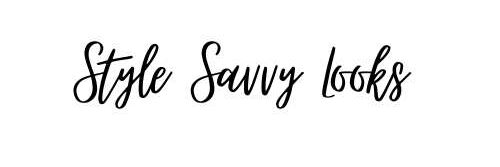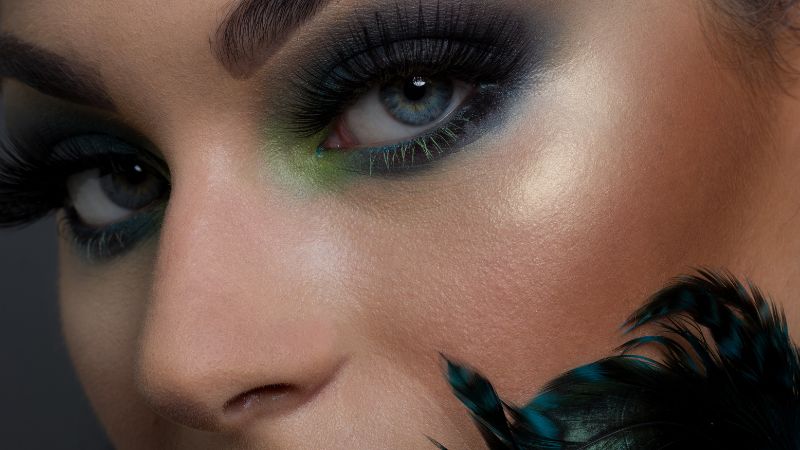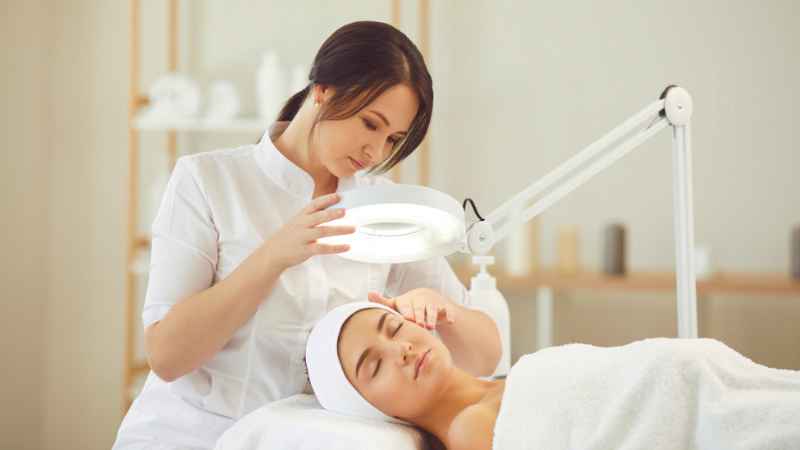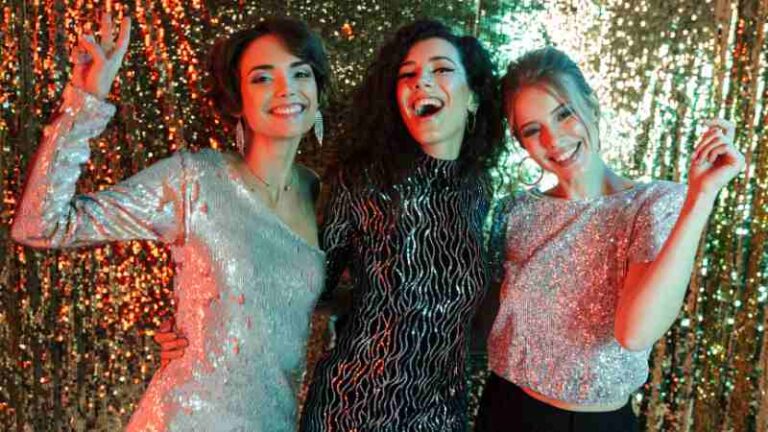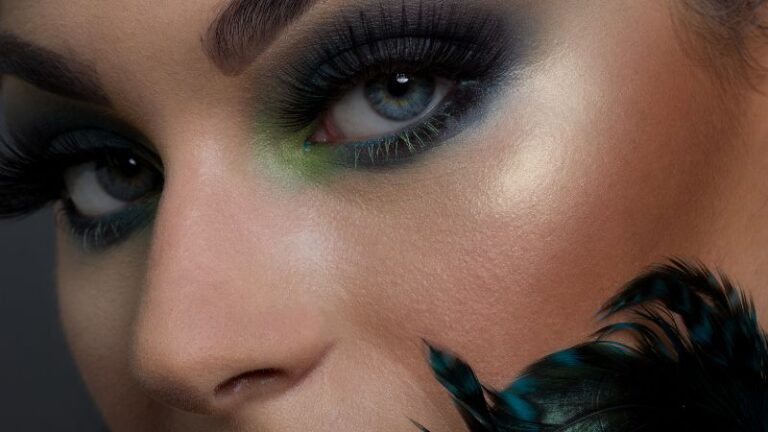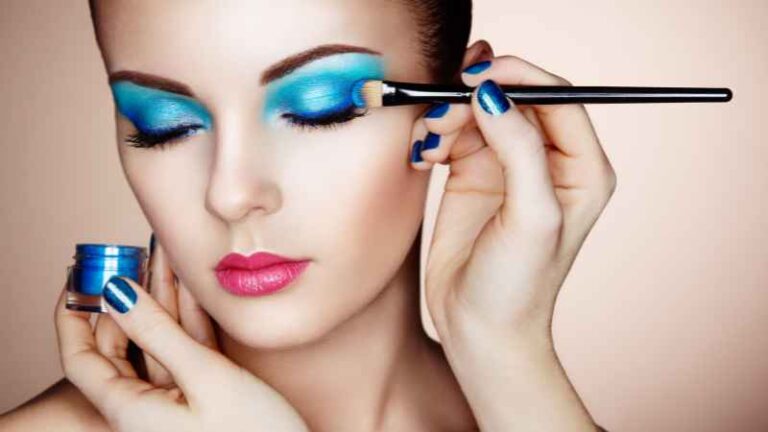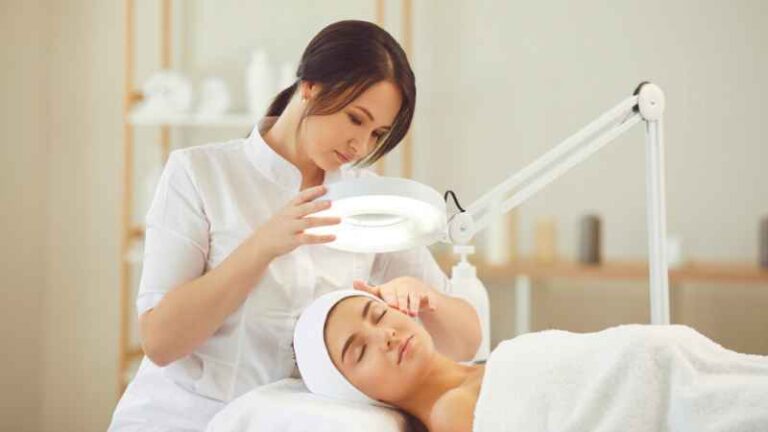Makeup’s history traces back thousands of years, reflecting diverse cultural practices and societal norms. Ancient civilizations like the Egyptians and Greeks used cosmetics for religious ceremonies, enhancing beauty and health. Throughout history, makeup has evolved, with each era and culture imprinting its influence on beauty standards. The Renaissance period celebrated pale skin and rosy cheeks, while the 1920s embraced bold and dramatic looks, marking a significant shift in societal attitudes towards makeup. The cultural significance of makeup extends beyond aesthetics; it often represents social status, individual expression, and even rebellion, making it a powerful tool for self-identity and cultural statements.
Makeup serves as a means of self-expression, allowing individuals to showcase their creativity, personal style, and mood. The transformative power of makeup goes beyond mere appearance; it influences one’s confidence and self-perception. Applying makeup often becomes a ritual, boosting self-esteem and empowering individuals to present themselves in the way they desire. The confidence that comes from feeling comfortable in one’s skin through makeup application is a testament to its psychological impact.
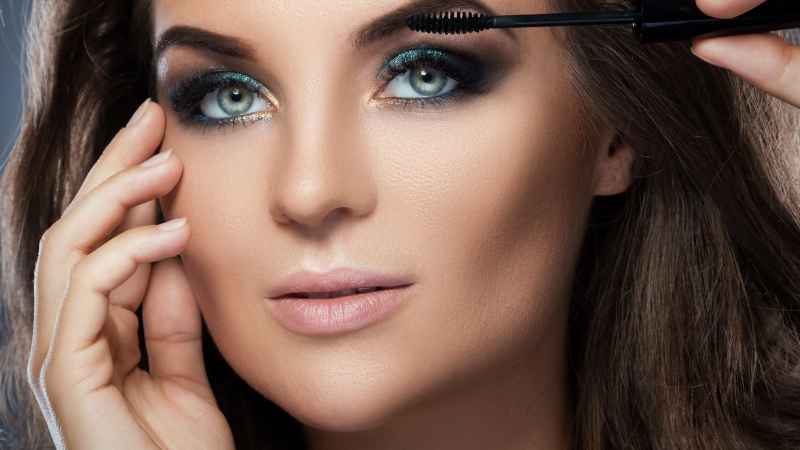
The “Makeup Mastery: Techniques for Beginners” course aims to empower individuals with the fundamental knowledge and practical skills needed to begin their journey into makeup artistry. The course structure is designed to progress systematically, starting from the basics and gradually advancing to more intricate techniques. It emphasizes hands-on learning, offering demonstrations, practical exercises, and guidance to understand makeup applications comprehensively. The course will cover skincare basics, foundation application, concealing imperfections, eye and lip makeup, contouring, and highlighting, culminating in creating various looks suitable for different occasions. By the end, students will have the confidence and skills to create personalized makeup looks while understanding the significance of makeup for self-expression and confidence.
The Foundation of Beauty: Foundation Application
Foundations come in various forms, each suited to different skin types and preferences. Liquid foundations offer versatility, providing sheer to full coverage, and are ideal for most skin types. Powder foundations work well for oily skin, offering a matte finish and buildable coverage. Cream foundations are richer and excellent for dry skin, offering more hydrating and often fuller coverage. Understanding these types allows individuals to select the most suitable foundation for their skin’s needs and desired finish.
Color matching and selecting the right foundation for different skin tones
Matching the foundation to one’s skin tone is crucial for a seamless and natural look. This involves understanding undertones—warm, cool, or neutral. With an array of shades available, testing the foundation on the jawline or the neck is essential to finding the perfect match. Some formulas adjust to the skin’s natural color, while others might need mixing or blending to achieve the ideal shade. When selecting a foundation, considering natural and artificial lighting is also vital to ensuring an accurate match.
Application methods: brushes, sponges, fingers, and achieving a natural finish
Different application methods offer varying finishes and coverage levels. Brushes provide a controlled and even application for liquid and cream foundations. Sponges offer a more natural finish and are perfect for blending, especially with wet applications. Fingers can work well with certain formulations, warming the product for seamless blending and a natural finish. Understanding how to use these tools aids in achieving a flawless, natural-looking base while considering individual preferences and skin type.
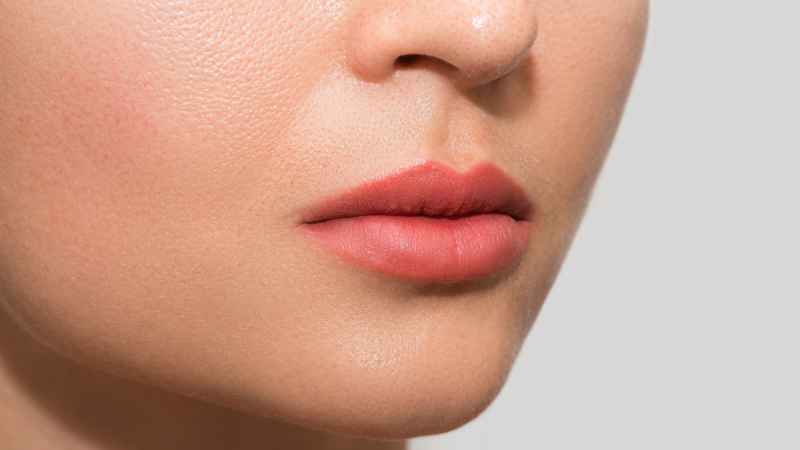
The Art of Concealing: Concealer and Color Correction
Concealers are a powerful tool to camouflage imperfections, such as blemishes, dark circles, or uneven skin tone. Color correction involves using specific hues to neutralize skin concerns; for instance, using a peachy or orange corrector to counteract dark under-eye circles. Concealers can brighten, highlight, and provide a more uniform complexion when used strategically, enhancing the foundation’s coverage.
Techniques to conceal blemishes, dark circles, and imperfections
Applying concealer requires precision and understanding of the specific concern. For blemishes, lightly dabbing the product directly on the imperfection and blending the edges seamlessly into the skin is key. Dark circles often benefit from a triangular application technique under the eyes, followed by gentle blending. Imperfections like redness or discoloration can be neutralized by applying color-correcting concealers before layering with a skin-tone-matching concealer.
Color theory and choosing the right shades for different skin concerns
Color theory plays a pivotal role in concealing imperfections. Understanding complementary colors helps select the right concealer shade to counteract specific issues. Green concealer neutralizes redness, while yellow or peachy tones counteract dark circles. Choosing the correct shades ensures effective color correction, leading to a more even and flawless complexion.
Sculpting Your Features: Contouring and Highlighting
Contouring involves creating shadows and depth to define and reshape facial features while highlighting and accentuating areas by bringing them forward. It’s a technique that utilizes different shades to sculpt the face, emphasizing cheekbones, slimming the nose, defining the jawline, and altering the shape of the face. Highlighting, on the other hand, adds light to high points of the face, such as cheekbones, brow bones, and the bridge of the nose, creating a radiant, lifted effect.
Identifying face shapes and suitable contouring techniques
Understanding one’s face shape is essential for effective contouring. Different face shapes require varied approaches. For instance, round faces benefit from contouring along the jawline and temples to add definition, while angular faces may need softer contouring to balance features. Techniques like the “3” shape along the temples, under the cheekbones, and along the jawline are commonly used for contouring. However, adapting these methods to suit individual face shapes is crucial for natural-looking results.
Highlighting methods to accentuate features and create a radiant look
Highlighting involves using light-reflecting products to enhance facial features. Applying highlighter to the high points of the face—the cheekbones, brow bones, the bridge of the nose, and cupid’s bow—creates a luminous, radiant effect. Various textures and shades of highlighter allow for customization, from subtle shimmer to an intense, dewy glow, enabling individuals to achieve their desired level of luminosity.
Eye Makeup Magic: Enhancing Your Eyes
Eye makeup involves a range of products designed to enhance the eyes. Eyeshadows come in various finishes (matte, shimmer, and satin) and colors, creating diverse looks. Eyeliners define the eyes and come in different forms—pencils, gels, liquids, or felt tips—each offering varied precision and finishes. Mascaras emphasize eyelashes, adding length, volume, and definition.
Basic eye shapes and appropriate eyeshadow application techniques
Different eye shapes require specific techniques for eyeshadow application. Hooded eyes benefit from a different approach compared to almond-shaped or downturned eyes. Techniques like using transition shades in the crease, darker shades in the outer corner, and shimmer on the lid create depth and dimension. Understanding these basics helps in accentuating the eyes while considering individual eye shapes.
Eyeliner styles, mascara application, and defining brows
Eyeliner styles can vary from a subtle tight line to a dramatic wing, catering to different preferences and eye shapes. Mascara application involves techniques to avoid clumping and achieve the desired effect—lengthening, volumizing, or defining. Defining brows through filling, shaping, and grooming helps frame the eyes, complementing the overall eye makeup look. Techniques include using pencils, gels, powders, or brow mascaras to achieve well-defined brows that suit individual face shapes and preferences.
Perfecting the Pout: Lip Techniques
Prioritizing lip care is crucial for a smooth canvas. Exfoliating lips removes dead skin, ensuring a smooth surface for lip products. Hydration through lip balm maintains moisture, preventing dryness and flakiness. Lip care routines often involve gentle exfoliation followed by hydrating treatments to maintain soft, supple lips, which is essential for flawless lipstick application.
More Post : Natural beauty remedies you can DIY
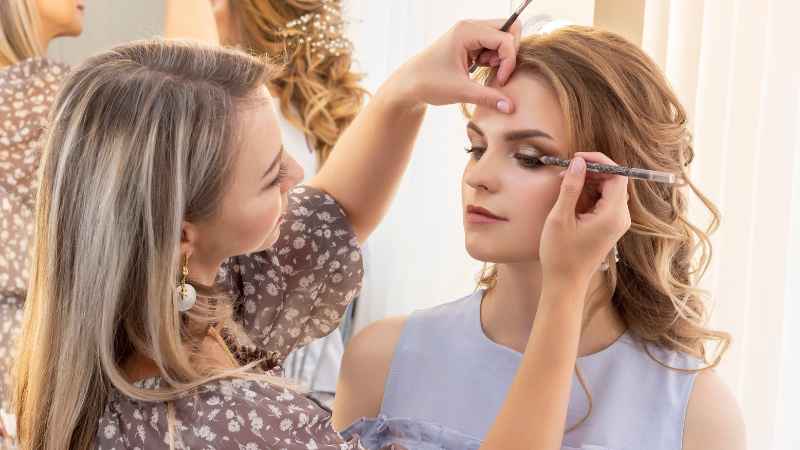
Exploring lip products: lipsticks, glosses, liners, and their uses
Lipsticks come in various finishes (matte, satin, and glossy) and a wide spectrum of colors, catering to different preferences and occasions. Lip glosses offer a shiny, often sheer finish, adding volume and shine. Lip liners define the lips, prevent feathering, and can be used to reshape or enhance the natural lip line. Understanding these products and their uses allows versatility in creating different lip looks, from subtle to bold.
Creating various lip looks and achieving a polished pout
Various lip looks can be achieved through different techniques, from nude to bold and dramatic. Applying lipstick straight from the bullet for a full coverage look, using a lip brush for precision, or patting on color for a stained effect offers diverse results. Glosses over lipsticks provide dimension and shine. Utilizing lip liners to define or overline the lips alters their shape, enhancing or correcting the natural lip line for a polished, professional finish.
Blushing Beauty: The Art of Blush and Bronzer
Blush and bronzer add warmth and dimension to the face. Blush adds color to the cheeks, mimicking a natural, healthy glow. It comes in various shades and formulas, from powders to creams, offering different intensities and finishes. Bronzer creates a sun-kissed effect, adding warmth to specific areas of the face. Understanding how and where to apply these products is crucial for a natural and flattering appearance.
Different blush placements for varying face shapes
Different face shapes benefit from varied blush placements. Round faces might need blush applied higher on the cheekbones to create a lifted effect, while oval or heart-shaped faces might focus on the apples of the cheeks. Understanding face shapes allows for precise blush placement, complementing the natural contours and achieving a harmonious, balanced look.
Bronzing techniques for warmth and dimension
Bronzer application involves targeting areas where the sun naturally hits the face—forehead, cheekbones, jawline, and nose—for a sun-kissed effect. Techniques include a light hand and gradual buildup to avoid an overly bronzed appearance. Blending is crucial to creating a natural, seamless warmth and dimension, enhancing facial contours while avoiding an artificial or muddy appearance.
Setting the Stage: Makeup Setting and Finishing
Setting makeup is essential to ensure it lasts throughout the day. It involves using products that help makeup stay in place and combating issues like fading, creasing, or smudging. Setting not only prolongs the wear of makeup but also maintains the intended look, whether natural, dewy finish or a matte, polished appearance.
Setting sprays, powders, and techniques for a lasting finish
Setting sprays acts as a final step to lock makeup in place. They come in various finishes—matte, dewy, or illuminating—catering to different skin types and desired looks. Setting powders offer additional oil control and ensure makeup longevity. Techniques like using a damp sponge to apply setting powder or evenly misting setting spray across the face from a distance help achieve a long-lasting, flawless finish.
Finishing touches and final checks for a polished look
Before concluding the makeup application, final touches are essential for a polished appearance. Addressing any smudges, ensuring even application, and blending out any harsh lines or edges contribute to a refined look. A final check for any areas that need touching up ensures a well-executed, professional finish.
Makeup Tools and Hygiene
Understanding makeup tools is vital for effective application. Brushes come in various shapes and sizes for different purposes—foundation, eyeshadow, blush, etc. Sponges offer seamless blending and can be used wet or dry. Beauty blenders create a flawless finish for foundations and concealers. Knowing how and when to use each tool ensures optimal makeup application.
The importance of hygiene in makeup application
Maintaining clean tools is crucial to preventing skin issues and ensuring the quality of makeup applications. Bacteria and product buildup on brushes or sponges can cause skin irritation or breakouts. Regular cleaning and sanitization of tools are essential for both hygiene and the tools’ longevity.
Cleaning, storing, and maintaining makeup tools
Cleaning tools regularly with mild soap or brush cleansers removes product buildup and bacteria. Proper storage in breathable containers or brush holders helps maintain the shape and quality of brushes. Regular maintenance and replacement of tools when necessary ensures efficient and hygienic makeup application, promoting both skin health and the longevity of the tools.
Makeup for Different Occasions
Daytime makeup focuses on a fresh, natural appearance suitable for everyday activities. This involves a light-coverage foundation, subtle eyeshadows, and neutral lip colors. Techniques like using minimal blush, soft eyeliner, and enhancing natural features create a polished yet understated look, perfect for work, casual outings, or daily routines.
Evening and special occasion makeup: glam and dramatic styles
Evening and special occasion makeup allows for more creativity and intensity. This style is characterized by bold eyeshadows, defined contours, vibrant lip colors, and enhanced features. Techniques like smokey eyes, winged eyeliner, and bolder contouring and highlighting elevate the drama, making it ideal for parties, events, or special gatherings where a more striking look is desired.
Adapting makeup techniques for various events and settings
Adapting makeup techniques involves understanding the context and adjusting the makeup accordingly. For professional settings, a more subdued and polished look might be suitable. However, experimenting with colors, textures, and intensities for social gatherings allows for more creative expression. Adapting to the setting ensures the makeup aligns with the occasion, creating the desired impact while considering the environment.
Building Your Makeup Kit
A well-rounded makeup kit for beginners includes foundational products like a good-quality foundation matching the skin tone, concealer, neutral eyeshadows, mascara, eyeliner, blush, and lipsticks or glosses. Tools like brushes, sponges, and a mirror are also essential for application.
Budget-friendly options and versatile products for a starter kit
Exploring budget-friendly options can help beginners build a versatile kit without breaking the bank. Drugstore brands often offer quality products at affordable prices. Opting for versatile products, like a palette with various eyeshadow shades or a multipurpose cheek and lip tint, allows for more versatility without needing an extensive collection.
Tips for building a personalized makeup collection
Building a personalized collection involves understanding personal preferences, skin types, and the occasions when makeup will be worn. Experimenting with different products, colors, and finishes helps find what works best. Gradually expanding the collection to include products catering to specific needs or desired looks ensures a well-curated and personalized makeup kit.
The psychological impact of makeup on confidence and self-image
Makeup is a powerful tool for influencing an individual’s confidence and self-perception. Applying makeup can be a form of self-care and a confidence booster. It allows individuals to enhance their features, cover imperfections, and present themselves in a way that aligns with their self-image. For many, it’s not just about physical appearance but also the psychological effect of feeling empowered and more confident.
Embracing individuality and using makeup as a form of self-expression
Makeup offers a canvas for self-expression. From subtle, natural looks to bold and creative styles, individuals can convey their personality, creativity, and mood. Embracing one’s individuality through makeup involves experimenting with colors, techniques, and styles that resonate with personal preferences. It’s a means to celebrate uniqueness and tell a visual story of self-expression.
Encouragement for self-experimentation and finding one’s unique style
Encouraging self-experimentation fosters a journey of exploration and self-discovery. Trying new techniques, colors, and styles allows individuals to find what resonates best with them. It’s a process of trial and error that leads to discovering a unique style. Embracing the learning curve and being open to trying different looks contributes to developing a personal and distinctive makeup style.
Conclusion and Next Steps
The course has covered fundamental aspects of makeup application, from skincare and foundation to contouring, eye makeup, and creating diverse looks for different occasions. Understanding the significance of each step and how it contributes to a polished makeup look has been emphasized.
Encouragement to practice and refine skills
Practice is key to mastering makeup techniques. Encouraging consistent practice and refinement of skills is vital for improvement. Continual practice, experimentation, and exploring new trends will aid in developing proficiency and confidence in makeup application.
To further expand knowledge and skills in makeup artistry, additional resources such as online tutorials, books, workshops, or advanced courses can be beneficial. These resources offer continued learning opportunities, providing more in-depth knowledge and techniques for those seeking to further their expertise in the field.
